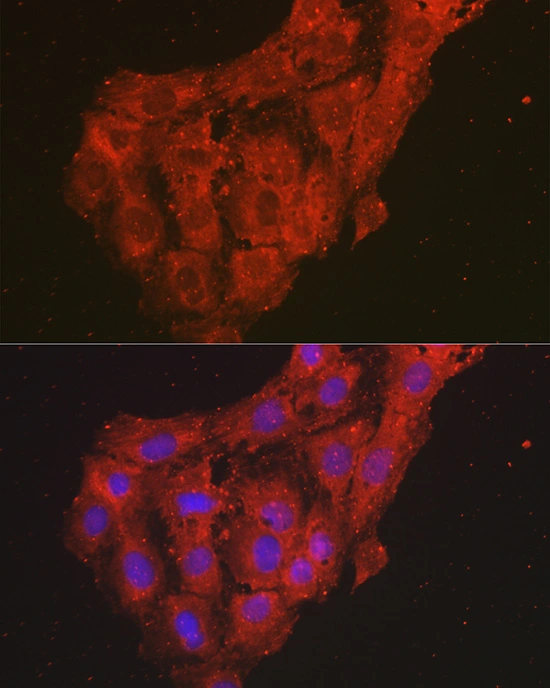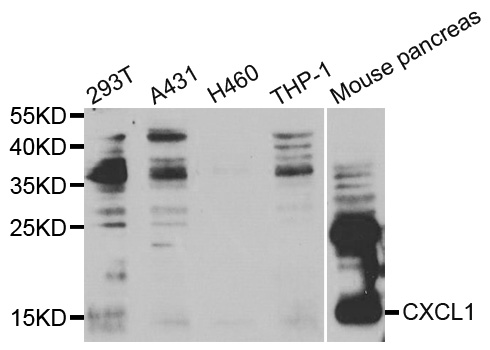
WB analysis of DU145 cell lysate using GTX53966 CXCL1 / GRO alpha antibody. Dilution : 1:1000 Loading : 25microg per lane
CXCL1 / GRO alpha antibody
GTX53966
ApplicationsImmunoFluorescence, Western Blot, ImmunoCytoChemistry
Product group Antibodies
TargetCXCL1
Overview
- SupplierGeneTex
- Product NameCXCL1 / GRO alpha antibody
- Delivery Days Customer7
- Application Supplier NoteWB: 1:500 - 1:2000. *Optimal dilutions/concentrations should be determined by the researcher.Not tested in other applications.
- ApplicationsImmunoFluorescence, Western Blot, ImmunoCytoChemistry
- CertificationResearch Use Only
- ClonalityPolyclonal
- ConjugateUnconjugated
- Gene ID2919
- Target nameCXCL1
- Target descriptionC-X-C motif chemokine ligand 1
- Target synonymsFSP, GRO1, GROa, MGSA, MGSA-a, NAP-3, SCYB1, growth-regulated alpha protein, C-X-C motif chemokine 1, GRO-alpha(1-73), GRO1 oncogene (melanoma growth stimulating activity, alpha), GRO1 oncogene (melanoma growth-stimulating activity), MGSA alpha, chemokine (C-X-C motif) ligand 1 (melanoma growth stimulating activity, alpha), fibroblast secretory protein, melanoma growth stimulating activity, alpha, melanoma growth stimulatory activity alpha, neutrophil-activating protein 3
- HostRabbit
- IsotypeIgG
- Protein IDP09341
- Protein NameGrowth-regulated alpha protein
- Scientific DescriptionThis antimicrobial gene encodes a member of the CXC subfamily of chemokines. The encoded protein is a secreted growth factor that signals through the G-protein coupled receptor, CXC receptor 2. This protein plays a role in inflammation and as a chemoattractant for neutrophils. Aberrant expression of this protein is associated with the growth and progression of certain tumors. A naturally occurring processed form of this protein has increased chemotactic activity. Alternate splicing results in coding and non-coding variants of this gene. A pseudogene of this gene is found on chromosome 4. [provided by RefSeq, Sep 2014]
- Storage Instruction-20°C or -80°C,2°C to 8°C
- UNSPSC12352203
References
- Visfatin Enhances Breast Cancer Progression through CXCL1 Induction in Tumor-Associated Macrophages. Wang YY et al., 2020 Nov 26, Cancers (Basel)Read this paper
- Blockage of the NLRP3 inflammasome by MCC950 improves anti-tumor immune responses in head and neck squamous cell carcinoma. Chen L et al., 2018 Jun, Cell Mol Life SciRead this paper





